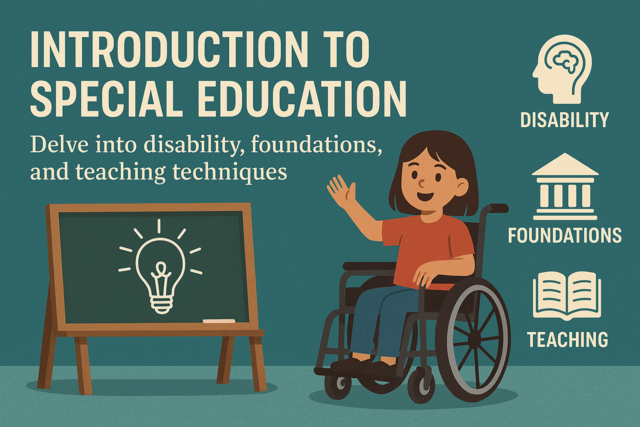A close, healthy parent-child relationship is necessary for positive parenting to be successful. In this article, we will look at the evidence for how such relationships are connected to optimal child outcomes, their main characteristics, the practices that support them, and how they develop over the course of a child's life.
Why Close, Healthy Parent-Child Relationships Matter
There are now several decades of research confirming a close, healthy parent-child relationship is related to positive outcomes for children from birth through adolescence. These benefits last into adulthood. These children are:
-
Self-reliant/Independent
-
Content
-
Adaptable
-
Cooperative
-
Considerate
-
Able to cope
-
Better self-controlled
-
Able to resolve conflict
-
Adept at problem-solving
-
Empathetic
-
Better at peer relationships
-
Successful academically
-
Engage in fewer risk behaviors
-
Have higher self-esteem
This is indeed a compelling set of optimal outcomes. It is for this reason the parent-child relationship is so fundamental to positive parenting. But what is it about a close, healthy parent-child relationship that is so powerful that such benefits are possible for children? Next we will look at the characteristics to find out.
Characteristics of Close, Healthy Parent-Child Relationships
The most powerful predictors of a close, healthy parent-child relationship are how much warmth, sensitivity, and responsiveness parents show to children. While these are related to each other, they do have distinct features.
Warmth. Parental warmth revolves around how loving, affectionate, and approving parents are toward their child. There is a strong nurturing tone, as well as a sense of authentic pleasure and enjoyment in interacting with the child. Warmth can be expressed non-verbally, such as through holding younger children, and hugs and pats on the back for older children and teens. Warmth is shown verbally through telling children they are loved and valued, or laughing together.
Positively accepting the child's efforts to engage and approach is a key aspect of warmth. When parents are warm, they welcome their child's need and desire to be close physically and/or emotionally in order to feel safe and worthy. Younger children may want to sit in a parent's lap, while a teen may feel loved when mom or dad sends an encouraging text.
Sensitivity. Parental sensitivity refers to how well a parent can notice, interpret, and respond to a child's verbal and non-verbal cues and signals in ways that are best for that child. Sensitivity has its roots, of course, in needing to ensure physical protection and basic needs are being met, but it has further purposes for emotional attachment.
Parents who are sensitive demonstrate genuine interest in their child's needs. They use eye contact, positive affect (emotional tone), and good vocal quality when interacting. They tailor their actions to meet their child's needs by taking into consideration areas such as developmental maturity and temperament. For example, they soothe or distract fussy infants, allow a child with sensory sensitivity to wear her favorite shirt two days in a row, or let their children do different activities based on their interests not the parents'.
Responsiveness. Warmth and sensitivity have elements of responsiveness. Additionally, responsiveness has to do with consistency. When parents are consistently responsive and attend to children when they send signals, children learn they matter and that their parent will be there for them. This builds trust and also keeps the child from having to resort to extreme measures, such as acting out, or withdrawing and refusing activities, to get his/her parents' attention.
A parent who is responsive will, for instance, go to comfort a toddler who is scared of the dark, even though she's in the middle of watching a movie; or take a phone call from a teen who "just needs to talk," even though it means the parent may have to bring work home to finish the day's tasks.
Core Principles that Promote Close, Healthy Parent-Child Relationships
In a major recent review of positive parent-child relationships, O'Brien and Mosco identify four core principles that promote such relationships.
Understanding. Parents must have knowledge of child development, learning, motivation, and of their children as individuals. This includes their unique likes, dislikes, what they are sensitive to, and their strengths. Additionally, parents must understand themselves, particularly what they expect of themselves as parents, and what support they will need as they raise their children.
Mutual Respect. Being open to listening to children and seeing situations from their viewpoint is a key element of showing mutual respect. Demonstrating a consideration of their child's perspective, which can include their opinions and preferences, even if the parent makes final decisions that are in the best interest of the child, builds a sense of worth and self-determination in the child. Further, parents are modeling that it is important to show others mutual respect when they acknowledge how their children feel and think, and what they need and want.
Open Communication. When parents practice open communication with children, they are listening in ways that are caring, compassionate, and reflective. This teaches their child they can, and also how to, safely show emotions. The child develops the ability to trust their feelings and the reality they are experiencing. An important component is that parents are also reflective of their own feelings and behaviors and own up to mistakes and apologize.
Time. Close, healthy parent-child relationships need time devoted to them in order to develop. Children feel valued and worthy of attention when parents do this. This is especially the case when parents take part in activities that matter to their child, but keeping in mind children like participating in parents' activities, as well. It's important when spending time together to reduce distractions, such as using technology and media, attending to competing demands of siblings, or work obligations. The time together should be used to promote skills for independence and confidence without criticism.
The Role of Temperament
Before we dive into how close, healthy parent-child relationships develop, we'll take a look at child temperament. Understanding and considering temperament is important, because a child's temperament influences the interactions with his/her parents. It also factors in when guiding a child's behavior.
Temperament is considered the foundation for the personality and is what, in part, makes up a child's individuality. Temperament is the biologically-based qualities infants and toddlers are born with. Temperament is a stable set of characteristics that is consistent over situations and time. These characteristics drive how an individual child interacts with his environment and the people in it.
Alexander Thomas and Stella Chess are best known for their work in temperament and the identification of how temperament is expressed. They identified nine traits: rhythmicity -- or regularity of biological functions, like eating and sleeping; approach or withdrawal to new experiences; adaptability to change; distractibility; activity level; quality of mood -- either mostly positive, or mostly negative; persistence or attention span; intensity of reaction; and sensory threshold to external stimuli like light, sound, and texture.
Combining these traits, and where a child falls on a continuum, three main temperaments have been identified, with the majority of children fitting one pattern:
Easy. Also called flexible, about 40 percent of children have this temperament. Such children are regular in bodily functions, tend to be happy, able to adapt and approach, are persistent, and don't easily get upset or distressed. Parents need to be sure they don't ignore such children, who do still have frustrations and fears, even though they don't show them readily.
Difficult. Also called feisty, about 10 percent of children fall into this category. These children are not regular, tend to be fussy, easily upset, unhappy, have difficulty with change, are very active, and easily distracted. These children need to be able to make choices, work out negative feelings, and burn off energy.
Slow-to-Warm. Also called cautious, about 15 percent of children have this temperament. Such children are usually calm, but can be fussy, unhappy, and want to avoid. This is especially the case in new situations and with change, but with time and familiarity, these children can become comfortable and warm up to the new experience.
It's important to note that while an easy child is usually also easiest to parent, what really determines this is called the "goodness-of-fit" between the parents' personality (which, remember, also has the foundation of temperament) and the child's. Along with this goes how willing the parent is to structure the environment to be sensitive to their child's temperament.
How Close, Healthy Parent-Child Relationships Develop
In this section we're going to further explore how positive parent-child relationships form by looking at them developmentally through the major periods of childhood from infancy through adolescence.
Infancy
Bonding
There is often confusion between the terms bonding and attachment. Bonding is what occurs the first few hours, days, and weeks after birth. It represents the first intense connection between parents, especially mothers, and their newborns. Attention to bonding in such a formal manner is, to some extent, a by-product of modern industrial societies, where most babies are delivered in hospitals, and much measuring and evaluation happens immediately after. While some of this is necessary, it is very different from the way in which mothers and their newborns met each other for the first time for most of human existence.
In humans, bonding goes beyond just a biological connection for driving behavior. It also has an emotional and a cognitive component. Quite a lot of activity to promote bonding is happening on the part of the newborn and the mother. There is abundant evidence that babies have a window where, right after birth, they are alert, make eye contact, turn toward their mother's voice, and nuzzle/root. These are all behaviors that support immediate connection.
It is also the case that large amounts of the hormone oxytocin are present during pregnancy, the process of childbirth, and mother-infant touch and contact following birth. Oxytocin is unique to mammals and is seen in the regions of the brain associated with attachment and social behavior. Oxytocin is related to empathy, closeness, trust, and calmness.
In a series of landmark studies, Ruth Feldman and her associates found that oxytocin levels in early pregnancy, and in the months following birth, were related to mother's gaze, vocalizations, positive affect, and affectionate touch. Oxytocin is present for dads, too, and at similar levels to moms. These same researchers discovered that higher oxytocin levels were found for men who did active behaviors that stimulated baby, such as tossing in the air, pulling their infant up to sit, and encouraging their little one to laugh and explore. For moms, this effect was more related to affectionate behaviors, such as those mentioned above. By the way, it's not just that oxytocin is present at pregnancy and birth, but is a hormone present throughout our lives for females and males, children and adults.
Attachment and Trust
The first year of life is the time when the attachment relationship develops in earnest. To thrive physically, as well as emotionally, babies need a relationship with a parental figure who is supportive and stable. In essence the child is developing trust as we discussed in the first stage of Erikson's theory of psychosocial development. The infant gains familiarity with his parents and environment, develops preferences for those she can trust, and learns to anticipate his parents' responses.
Warmth, sensitivity, and responsiveness support the development of a secure attachment. Attachment is promoted when the parent has the ability to evaluate a situation using the child's perspective. When parents are sensitive and respond quickly to their child signals, especially those which are making the child uncomfortable, such as being tired, hungry, or scared, this fosters a secure attachment.
Parents who feel empathy, meaning they can relate to what and how their child is feeling, are more able to establish a relationship that is mutually responsive. One of the most central events happening in secure attachment is the onset of the parent as a secure base for exploration. This begins to emerge at about six months, but is used throughout childhood, and even in adolescence.
Infants are active in this process, as well, by encouraging their parents to be warm, sensitive, and responsive. Some of the behaviors they exhibit are the social smile between six to 10 weeks, extensive smiling by three months when parents are playful, and their vocalizations, which become intentional to communicate with others in the second half of the first year. They also reinforce their parents and caregivers by becoming soothed and calmed.
Toddlerhood
Attachment and Autonomy
Ages 1 � to 3 years is considered toddlerhood, so named because children are now able to walk, and when beginning to do so, they "toddle." The attachment relationship is now firmly in place. As toddlers become more mobile, they become highly invested in exploration and being autonomous. Autonomy is showing healthy independence and is related to self-sufficiency. The development of autonomy, as you might recall, maps onto Erikson's second stage of psychosocial development. Interestingly, a close, healthy parent-child relationship is needed for children to be able to move away from the parent to explore their environment and to do for themselves.
However, in this early childhood period children very much rely on their parent to act as a secure base. It can be very intimidating to approach new people and try new things. Such experiences quite often cause discomfort and even fear, but the child is more likely to attempt these when he/she knows mom or dad are available to assure and comfort them as well as to help set limits. In this way, the parent is a supervisory partner to the child.
Parents have to be willing to let children develop their autonomy. This is even in light of the fact that it can try their patience as their child wants to do almost everything on their own and are slow and unable to always do activities well. Of note is there has actually been a rise in concern by practitioners that some children are not meeting developmental milestones, because parents are so anxious that something adverse will happen they aren't allowing children to take what they consider risks, like running and climbing. It's very important that parents don't shut down children's natural curiosity, and hence, their development.
The Preschool Years
Authoritative Parenting
During the years of 3 to 5, the parenting style becomes more prominent as the context for the parent-child relationship. The authoritative parenting style is the most conducive to forming a close, healthy parent-child relationship. This is because such parents are warm, sensitive, and responsive, but also have appropriate expectations and set limits and consequences that are fair yet firm.
This is the time when children are immersed in initiative, the third stage of Erikson's psychosocial theory. They are motivated to plan and carry out their own activities and in their own way. A positive parent-child relationship is one in which parents can allow and encourage the child to meet the world with purpose. Parents, however, do need to help children develop skills, as these may not always be up to par with children's ideas about what they can or want to do.
Middle Childhood
The Big World
As children enter middle childhood (ages 6 to 11), all the same aspects of parental warmth, sensitivity, responsiveness, support, appropriate expectations, and boundaries are needed for close, healthy parent-child relationships. The child's world now rapidly expands with the entrance into school. This is the stage of industry in Erikson's theory. The tasks children must concentrate on change to become more formal and educationally-based and to include daily and extensive connections with peers.
The parent-child relationship serves as support for children to be independent and successful in this new and often intimidating environment. Parents need to match expectations with the child's growing competencies, but still monitor in areas like homework and chores.
A change occurs near the end of middle childhood where parents are now needed to be a compassionate listener and much less a "fixer." Parents must convey to children that it's alright to make mistakes, but important to persevere. This can be hard in this period of childhood, because many mistakes are now not seen just at home, but in a very public and sometimes quite critical environment -- this is school, with less familiar adults and peers.
Adolescence
Identity
The parent-child relationship is now in store for another major moving away by the child, both psychological, but also physically. Teens are preparing to be on their own by deeply and actively exploring their identity (Erikson's fifth stage), aligning more with their peer group for friend and romantic relationships, and considering career options. As they do so, this time is marked by adolescence egocentrism, as teens turn their focus more inward on themselves.
This drive to make plans and decisions for their approaching adulthood is strong, but for most adolescents, the drive is ahead of the brain development of the frontal lobe. This area of the brain is the last to mature and is the most related to controlling impulses. On the other hand, adolescents are gaining the ability to consider many possibilities and their outcomes without acting on them. Parents can become concerned their teen doesn't always seem in control. However, by serving as a non-judgmental sounding board for all these emerging beliefs and ideas, the close, healthy parent-child relationship serves again as a secure base for exploration. It's important to remember that adolescents still need and want a relationship with their parents.
Summary
Close and healthy parent-child relationships are essential for children to have the most optimal outcomes. Positive parenting is related to establishing such a relationship through being warm, sensitive, and responsive to one's child. This allows children to get their evolving needs met as they move through the developmental periods.
These practices support bonding and attachment for babies. They promote autonomy and initiative for toddlers and preschoolers. They support being industrious for school-age children. For adolescents, warmth, sensitivity, and responsiveness facilitate positive identity development. Additionally, when the parent-child relationship is close and healthy there is more harmony and happiness for parents and for kids.




























